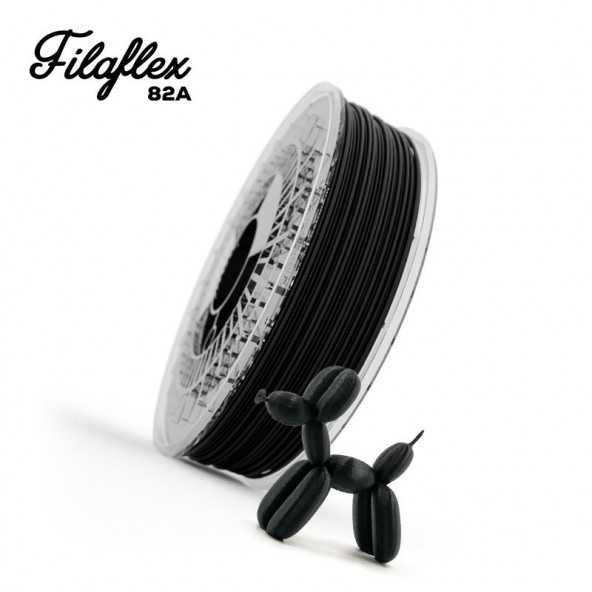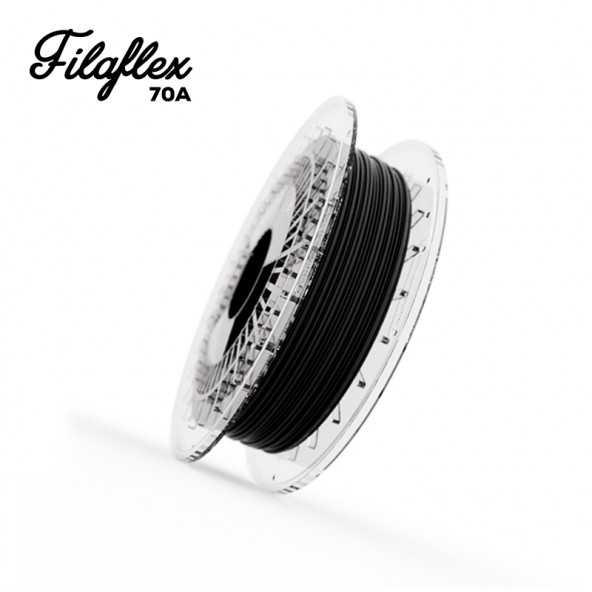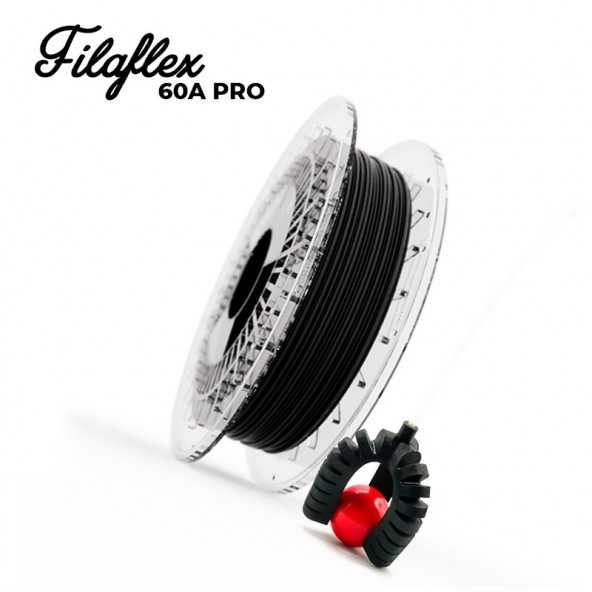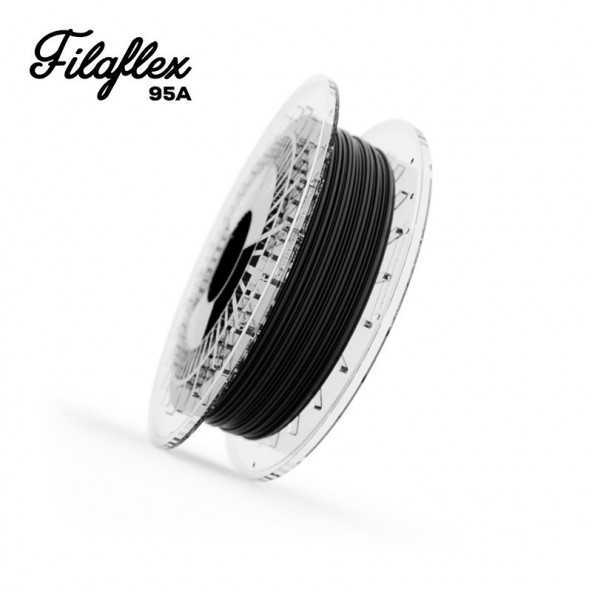Who said 3D printing or flexible filament was difficult?
Once again, we are surprised by a story of overcoming. The clear example that shows that to get started in the world of 3D printing you don't need to have technical knowledge or to have studied engineering, that it is not an inaccessible technology and that you don't have to fear it or respect it. This is what Maria Siqueira shows us with these admirable results and working with our flexible filament Filaflex, including the softest elasticities of the range! A demonstration that the limits are only those you find in your own mind. Don't miss it!
Maria Siqueira is a Portuguese student of the 'Master of Arts Fashion Design' at the Institut Français de la Mode, a very selective course ranked as the second best in the world. For her Master's final collection, she created a 3D printed collection by making her own fabrics. She chose Filaflex 82A and Filaflex 70A as the materials with which to print her collection because they have the perfect hardness for the textile-like textures she wanted to create. After presenting her collection at the opening of the Paris Fashion Week, this past March, we talked to her to tell us what led her to use our material and 3D printing technology for its creation.
Hi, Maria, could you tell us briefly what your collection is about?
My collection named 'Neostalgia', is an homage to my Portugues heritage, where I combine both my sentimentality and my rather logical thought process, while liberating myself from gender archetypes and focus on the garment and the body. A journey which aims to bring nostalgia and the modern world together harmoniously.

What has been the challenge of bringing out your own 3D printed collection?
The main challenge was to have a garment that, even though 3D printed, doesn’t feel too futuristic, plastic and sculptural. It was important to me to create a collection that while created with modern technologies still emanates an emotion and has an artisanal feel that answers to the sentimentality of my work.
Also, as I was completely new to 3D printing there was a lot of experimentation both with the 3D modelling process as well as with the printing itself, which could sometimes lead to a very frustrating spaghetti-like mess on the printers bed after hours of printing. The main challenge was to be able to fully understand the 3D printer and the figuring out the right settings for each garment or textile as well as the time management, as a small mistake could set me back a lot of hours of work.



Images above: Textile samples 3D printed with Filaflex 82A for the 'Neostalgia' collection from Maria Siqueira's Instagram account @almadanimdesiqueira.
Where did you get the creative inspiration to design the models of your collection and the techniques to make them with 3D printing?
I was inspired by the nostalgic photography of Artur Pastor and merged traditional silhouettes and symbolic elements, of my portuguese culture: as the checked pattern found in Nazarene’s fisherman’s traditional workwear or the traditional embroidery technique from Ilha terceira to create textiles using 3D printing.
.jpg)

Images above: Photography by Artur Pastor from Maria Siqueira's Instagram account @almadanimdesiqueira.
What garments from your collection have you 3D printed?
I have printed several pieces for my Neostalgia collection: for one of the looks I’ve printed a full checked skirt and matching sleeves in gold, brown and blue with filaflex 82A and 70A. For another look I printed an checked blue and gold top on filaflex 70A and 82A. I have also printed a top in transparent filaflex 82A on a third look. And finally, I printed a full 3D printed look with a matching top and skirt in a textile inspired by portuguese traditional embroidery in white 82A filaflex. As well as some hand bags that were worn with some of the looks.



Images above: Photography by Guillaume Roujas (@guillaumeroujas).
Left image: full checked skirt and matching sleeves in gold, brown and blue with filaflex 82A and 70A.
Center image: checked blue and gold top on filaflex 70A and 82A.
Right image: full 3D printed look with a matching top and skirt in a textile inspired by portuguese traditional embroidery in white 82A filaflex.
Why did you choose 3D printing technology to make your collection?
The use of 3D printing came out of curiosity. I had no idea what was possible but I knew I wanted to make use of my more logical side together with my sentimentality when developing my “Neostalgia” collection as it strongly resumes my approach to design and 3D printing quickly became perfect tool for this.






Images above: Photography by Tim Tyas (@tim_tyas).
Did you have previous experience or knowledge in 3D printing? If so, how did it all start?
Creating this collection was my first contact with 3D printing.
Why did you choose Filaflex to print your collection, what does it give you?
Initially I started 3D printing with PLA and quickly understood that it was too far off from the textile like experience I was looking for. I started looking at different TPU filaments and experimenting with shore hardness, color and patterns and the use of Filaflex was perfect for this as there was a lot of choice for this experimentation.
How was the experience of printing with Filaflex and testing its different flexibilities or Shore hardnesses, Filaflex 82A, 70A and 60A? What would you highlight about them?
Once I started using Filaflex I mostly chose to use shore hardness of 82A which was perfect to have enough bounce and flexibility on the textile but also enough structure to hold the big volume the garments would have and was scared to use the 70A because more flexibility, to me, it meant it would be harder to get a good print but was pleasingly surprised to find out that with the same settings I used for the 82A filaflex the outcome was really great with an amazing flexibility.
What printers have you used to print with the different Filaflex Shore hardnesses?
Initially I was printing on an Ultimaker 3 which was available to use at the Institut Français de la Mode’s fablab, where I am studying, but I realised I needed a bigger bed surface and a direct drive would make it much easier to handle the filament and finally printed all the pieces from my Neostalgia collection on a Artillery Sidewinder X2. I’ve also used the Filaflex filament to link the printed pieces together with the MYNT3D Pro 3D pen in order to keep the same flexibility throughout the whole garment.



Images above: Photography by Tim Tyas (@tim_tyas).
What would you highlight about Filaflex compared to other materials you have used?
It’s a very reliable filament! Once I found the right printing settings for my printer and for the type of print I was working on, I could print hours on end. I was really impressed about how easy it was to print even with a lower shore hardness of 70A. Considering how new I am to 3D printing it really shows how it can open a lot of doors for all type to users.
What advice would you give to someone who would like to start in the fashion and 3D printing industry?
I would say that most importantly, stay truly curious and be passionate about it. For the 3D printing, specifically, it’s important to be paciente and use your problem solving skills.
What are your next steps or projects?
My next steps will be completing my internship which will start the coming autumn at Louis Vuiton menswear studio.
CREDITS OF THE PHOTOS:
- Studio photos: Tim Tyas (@tim_tyas).
- IFM show/backstage:
© Photo IFM - Sacha Héron
© Photo IFM - Guillaume Roujas
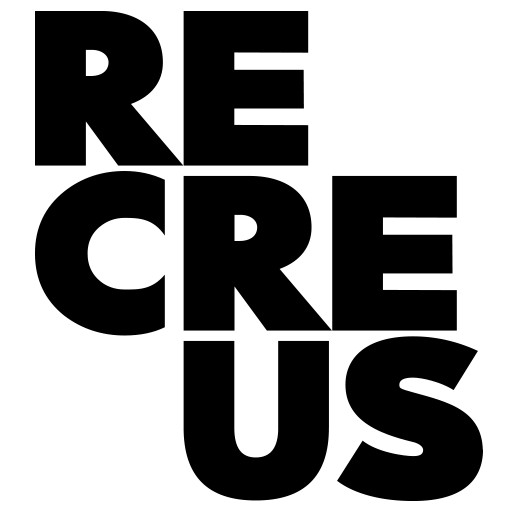
 fr
fr  es
es en
en de
de it
it